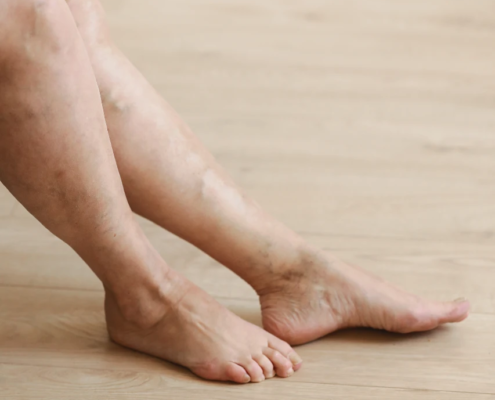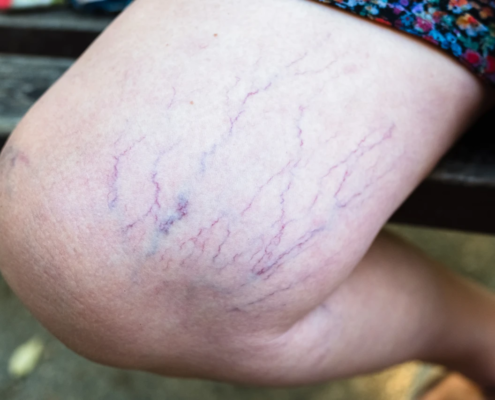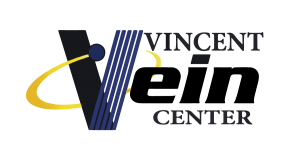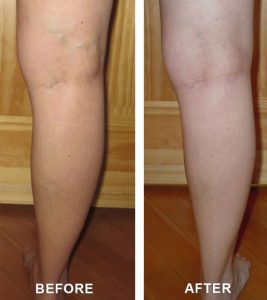Vein Services at Vincent Vein Center
Vincent Vein Center provides vein treatments and vein services in Delta, CO. Our team includes members who are certified and specially trained in Phlebology, which is the study of vein anatomy, diseases, and physiology. We have the expertise and knowledge to diagnose and treat various vein conditions properly. Vincent Vein Center is committed to providing you with the highest quality of vein care in the Grand Valley. We offer vein treatments for the following vein conditions:
- Varicose Veins
- Chronic Venous Insufficiency
- Spider Veins
- Venous Stasis Ulcers
Varicose Veins
Varicose veins appear as enlarged, bulgy veins and commonly form around the legs and feet. They form in these areas because standing, sitting, and walking increase the pressure on veins in the lower body. The veins in the lower body are also under increased pressure because they have to go against the force of gravity to push blood back to the heart. As we age, this increased pressure and force can weaken the valves and cause blood to collect. If the valves become weak or damaged, blood can flow backward and pool in the veins, ultimately causing them to stretch or twist.

Causes and Risk Factors
- Age
- Gender – Women are more likely to develop varicose veins.
- Obesity
Signs and Symptoms
Varicose veins do not always cause pain. Signs can include:
- Dark purple or blue veins
- Twisted, bulging veins that appear like cords on the legs
Painful signs and symptoms of varicose veins can include:
- Achy or heavy feeling in the legs
- Burning, throbbing, muscle cramping, or swelling in the lower legs
- Worsened pain after sitting or standing for long periods
- Itching around one or more of the veins
- Changes in skin color around a varicose vein
Spider Veins
Spider veins develop in tiny capillaries just under your skin’s surface. They are usually harmless and look red, blue, or purple. Blood is pumped from your heart throughout your body and then back to your heart. Valves help keep the blood flowing in the right direction. When a valve does not work properly, blood has difficulty flowing in the right direction, causing it to pool in your veins and swell.

Causes and Risk Factors
- Genetics
- Hormonal changes
- Prolonged sitting or standing
- Injury or trauma to the area
- Spending lots of time in the sun
- Being overweight
- Smoking
Signs and Symptoms
Although rare, people with spider veins in their legs experience the following symptoms:
- Pain
- Tired feeling in legs
- Itching
- Cramping
- Burning
Sometimes, these symptoms are related to other conditions, and treating the Spider Veins does not improve the symptoms.
Vein Treatments
Vincent Vein Center offers a variety of treatment options for vein conditions, including Endovenous Laser Treatment, Ultrasound-Guided Sclerotherapy, and more.
Endovenous Laser Treatment (EVLT)
Endovenous Laser Treatment is performed by inserting a thin fiber into the damaged vein through a small puncture in the skin. Laser light is sent through the fiber, which causes the vein to heat from the inside. Once the fiber is slowly pulled out of the vein, the vein tissue reacts with the light energy and causes the vein to close shut. Endovenous Laser Treatment is minimally invasive and used to treat varicose veins.
Ultrasound-Guided Sclerotherapy (USGS)
Sclerotherapy uses ultrasound guidance to inject medication into the vein. This medication causes the vein to spasm and flatten into a fibrous cord. The blood flow in the vein stops, which causes it to dissolve over 3-6 months. Sclerotherapy is minimally invasive and used to treat varicose or spider veins.
Visual Sclerotherapy
Visual Sclerotherapy is used to treat spider veins, and since they can be seen from the skin’s surface, an ultrasound is not necessary to treat them. Spider veins are tiny broken capillaries on the surface of the legs or face. They do not always cause pain, but some patients prefer to remove them for appearance reasons.
If you suffer from any of the vein conditions mentioned above, contact Vincent Vein Center. Our vein specialists will help diagnose and develop a treatment plan for your condition.

